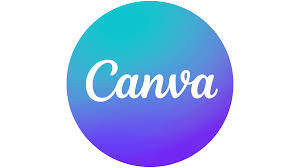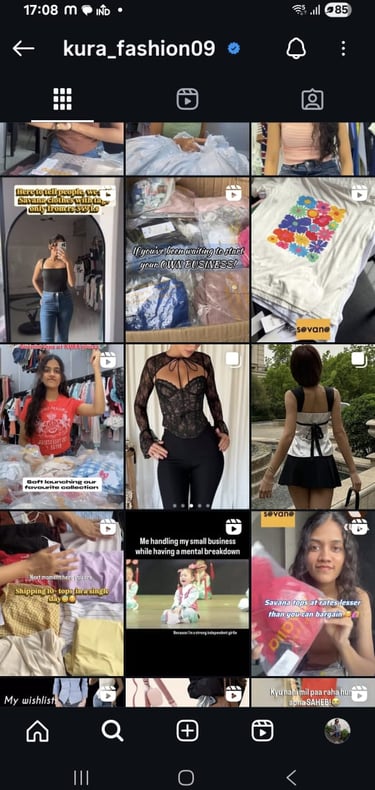How Can Social Media Impact Communication in Business?
Discover how social media impact business communication, improves engagement, and builds trust. Learn tools, AI trends, and real case studies for 2025. This blog will give you insights on how social media can do great work for business.
10/19/20258 min read


1. Introduction — The Growing Role of Social Media in Business Communication
In today’s fast-paced digital world, the way we communicate has changed forever. Social media is no longer just for sharing selfies or chatting with friends — it has become a core communication tool for businesses of all sizes. Whether you’re a local shop owner or a global enterprise, understanding how social media can impact communication in business is key to staying relevant and competitive.
Unlike traditional channels like print, radio, or TV, social media enables real-time two-way communication. Businesses can now talk with customers, not just to them. A single post on Instagram or a tweet on X (Twitter) can start conversations, gather feedback, and even solve customer problems instantly. This makes communication faster, more personal, and more impactful.
Internally, social media and digital platforms have also changed how teams work. From private LinkedIn groups to Slack or WhatsApp communities, companies use social media tools to collaborate, share updates, and boost productivity — especially in remote or hybrid work settings.
Most importantly, social media levels the playing field. Small businesses can compete with large corporations by showcasing authenticity, creativity, and customer-centric communication. Every caption, reel, and comment becomes a way to tell a story and build trust.
In short, social media isn’t just a marketing tool — it’s the modern language of business communication.
2. Channels That Can Be Used for Business
There are hundreds of social media platforms, but not all are suitable for every business. Choosing the right channels for business communication depends on where your audience spends their time and how you want to interact with them. Here’s a breakdown of the most effective platforms and how they can enhance communication.
1. Facebook — Building Community and Trust
Facebook remains one of the strongest platforms for business communication.
With over 3 billion users, it’s ideal for small businesses that want to stay connected with customers and build long-term relationships.
You can use:
Facebook Pages to post updates, photos, and announcements
Messenger for direct, real-time communication
Facebook Groups to build a loyal community around your brand
💡 Example: A home-based bakery can use Facebook to share product photos, collect reviews, and answer customer questions instantly.
2. Instagram — Visual Storytelling for Brands
Instagram is perfect for businesses that rely on visuals — fashion, food, design, or lifestyle brands. It’s one of the most engaging channels for business communication.
Through:
Stories and Reels, you can show behind-the-scenes moments
Live sessions let you connect directly with followers
DMs make one-on-one customer support easy
💡 Tip: Use polls and question stickers to make your followers feel heard — it’s simple yet powerful communication.
3. LinkedIn — Professional and B2B Communication
LinkedIn is the best platform for professional networking, thought leadership, and B2B communication.
Here you can share insights, updates, and company culture while connecting with clients and partners.
Use LinkedIn to:
Publish articles showcasing your expertise
Communicate company values and achievements
Network with professionals and potential customers
💡 Example: A digital marketing agency can share client success stories to attract new business leads.
4. X (Twitter) — Fast and Direct Communication
X (formerly Twitter) is all about short, quick updates and real-time engagement.
It’s a great platform for sharing company news, announcements, or responding to customer feedback.
Businesses use X to:
Announce product launches or offers
Engage in trending topics and industry discussions
Provide fast customer support
💡 Example: Airlines like Indigo or Vistara use X to handle customer issues on the spot — turning complaints into positive interactions.
5. YouTube — Educational and Long-Form Communication
YouTube is the second-largest search engine after Google.
It allows businesses to share long-form videos that educate, entertain, and inform customers.
Use YouTube for:
Tutorials, demos, or behind-the-scenes content
Explaining products and services in detail
Building trust through face-to-camera videos
💡 Example: A small business selling skincare products can post “how-to” videos explaining proper usage.
6. WhatsApp Business — Personalized Customer Interaction
WhatsApp Business makes communication quick, private, and personal.
It’s ideal for small businesses that want direct communication with customers.
Use it to:
Send order updates or confirmations
Share catalogs and quick responses
Build 1-to-1 relationships with clients
💡 Tip: Use broadcast lists to share offers without spamming your customers.
7. TikTok and Short-Video Apps — Authentic, Viral Communication
Short-video platforms like TikTok or Instagram Reels allow brands to connect with audiences in fun, authentic ways.
These platforms are ideal for storytelling, quick tips, or showcasing personality.
💡 Example: A café posting 10-second clips of coffee brewing or customer smiles can reach thousands overnight.
8. Pinterest — Inspiring Visual Communication
Pinterest is a discovery platform perfect for home decor, fashion, fitness, and creative brands.
You can communicate visually through pins, infographics, and mood boards.
💡 Example: A home interior brand can use Pinterest boards to showcase different room ideas and link them to their website.
3. Free Tools in Social Media for Business Communication
Running a business on social media doesn’t have to be expensive. There are plenty of free tools that help improve communication, productivity, and creativity. Here are some of the best:
1. Canva
A free graphic-design tool for creating professional social media posts, infographics, and ads.
You don’t need design experience — just drag, drop, and publish.
2. Buffer
A social media scheduling tool that allows you to plan and post on multiple platforms at once.
It helps maintain consistency in your communication strategy.
3. Google Alerts
Monitor your brand mentions or industry topics easily.
Whenever your business or related keywords appear online, you get notified — helping you stay on top of conversations.
4. Trello
A project-management tool to keep your team organized.
Create boards for content calendars, campaigns, and task tracking — perfect for team communication.
5. Meta Business Suite
Manage Facebook and Instagram in one place.
You can schedule posts, reply to messages, and track performance — all for free.
6. Mailchimp (Free Plan)
Use it to send newsletters, updates, and announcements.
It helps bridge your social and email communication seamlessly.
7. Bitly
Shorten long links and track how many people clicked them.
Useful for communicating calls-to-action in captions or bios.
8. Loom
Record and share short videos or screen recordings — a great internal communication tool, especially for remote teams.
4. New AI Tools to Keep Businesses Ahead of the Competition
Artificial Intelligence is transforming social media communication.
AI tools help businesses automate, analyze, and personalize their interactions — saving time and improving results. Let’s look at some of the most powerful ones:
1. ChatGPT
An AI assistant (like me 👋) that helps write captions, blog posts, responses, and even marketing ideas.
It makes your communication faster, smarter, and consistent in tone.
2. Canva Magic Studio
AI features inside Canva that help you generate designs, remove backgrounds, write captions, or resize posts automatically.
3. Jasper AI
Perfect for brands that need a lot of written content.
It helps you write product descriptions, emails, and social media captions optimized for engagement.
4. Descript
An AI-based video editor that converts speech into text — you can edit videos just by editing words.
Ideal for social media teams that create podcasts or video tutorials.
5. Flick AI
This tool uses AI to generate captions and hashtags.
It even analyzes engagement and suggests the best posting times.
6. Notion AI
Helps with note-taking, team collaboration, and project communication.
Great for planning social media campaigns or brainstorming ideas.
7. Hootsuite OwlyWriter
An AI-powered feature in Hootsuite that helps you write social posts, generate ideas, and repurpose content across multiple platforms.
8. Grammarly
Improves your writing tone, grammar, and clarity — ensuring every message you send looks professional and on-brand.
5. Case Studies — How Businesses Use Social Media for Communication
Let’s look at real-world examples of how social media impacts business communication:
Case Study 1: Starbucks — Building Conversations, Not Just Coffee
Starbucks uses social media to humanize its brand.
Through Twitter and Instagram, it responds to customer feedback, shares user-generated content, and promotes causes like sustainability.
This approach builds strong emotional connections and brand loyalty.
Result: Higher customer engagement and trust.
Case Study 2: Zomato India — Witty and Relatable Communication
Zomato’s social media presence is all about humor and real-time engagement.
Their relatable posts and witty one-liners spark conversations and make people share their content organically.
Result: Increased brand recall and community interaction.
Case Study 3: Nike — Empowering Through Storytelling
Nike uses social media to share inspirational stories, not just products.
Their campaigns promote inclusivity, motivation, and empowerment — making communication more meaningful.
Result: Massive global engagement and emotional connection with audiences.
Case Study 4: Local Bakery in Mumbai — From WhatsApp Orders to Instagram Growth
A small bakery in Mumbai used Instagram Reels and WhatsApp Business to take orders, share customer reviews, and showcase baking moments.
Within three months, engagement tripled, and sales doubled — all through consistent, friendly communication.
Result: Growth through trust and authenticity.
Case study 5: Vegan Restaurant in Mumbai - “Thank Gourd” From word of mouth to instagram growth
This vegan restaurant started with a small place and started marketing through their word of mouth and then with their quirky fun content on instagram to capture the attention of Genz. Now it has grown and shifted to a new and bigger place due to its brand image.
Within months its followers increased and sales doubled.
Result: Growth through unique conversation and Branding.
Case Study 6: A clothing brand named Kura fashion - From offline to online marketing.
This small business started with offline exhibitions and sales and gradually started creating content on instagram and promoting products to their target audience.
Their sales and visibility doubled in just 6 months
Result : Growth through consistent content creation and engagement.
6. Key Takeaways and Conclusion
Social media has revolutionized the way businesses communicate. It allows brands to listen, engage, and build trust — all while staying authentic and human.
🌟 Key Takeaways
Social media is essential for business communication.
It bridges the gap between brands and customers, creating real-time two-way interaction.Choose platforms that suit your goals.
Focus on where your customers are active instead of trying to be everywhere.Use free tools to simplify workflows.
Canva, Buffer, Trello, and Google Alerts help you stay consistent and professional.Adopt AI tools to stay ahead.
ChatGPT, Jasper, and Canva Magic Studio make content creation faster and smarter.Prioritize relationship-building.
Respond to comments, share stories, and appreciate your audience — communication is about connection, not just sales.Be consistent and human.
Authentic communication wins over algorithms every time.
💬 Final Thoughts
The question “How can social media impact communication in business?” has a simple yet powerful answer:
It changes everything.
Social media brings people and brands closer than ever before. It turns small businesses into global names and customers into loyal advocates. The tools are there, the audience is waiting — all you need is a clear voice and a genuine message.
In the end, great communication isn’t about talking the most — it’s about listening, engaging, and growing together.
So start using social media not just as a platform, but as a bridge between your business and the people who believe in it.
Because in today’s world, communication is connection — and connection is everything.










Connect
Empowering businesses to thrive online and succeed.
Expertise
© 2025. All rights reserved.